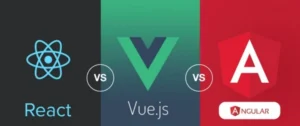In the ever-evolving realm of JavaScript development, effective package management is paramount. This blog post takes a deep dive into two prominent package managers, Bun and Yarn. We’ll explore the distinctive strengths of each and shed light on potential compatibility considerations for developers.
Why Bun or Yarn?
- Developer-Centric Simplicity:
- Bun: Built with simplicity and ease of use in mind, Bun is a JavaScript package manager designed to accelerate development workflows and cater to a wide range of projects.
- Yarn: Yarn, a renowned package manager, prioritizes modern development workflows with an emphasis on speed, reliability, and deterministic dependency resolution.
- Streamlined Performance:
- Bun: Emphasizing efficiency, Bun strives to streamline development processes with a focus on performance, making it an attractive option for projects of varying sizes.
- Yarn: Yarn is celebrated for its speed and reliability, achieved through parallel operations during installations and a global cache for efficient network usage.
- Dependency Resolution Perspectives:
- Bun: With a commitment to determinism and efficiency, Bun ensures reliable dependency resolution, providing a solid foundation for JavaScript projects.
- Yarn: Yarn utilizes a lock file (
yarn.lock) to achieve deterministic dependency resolution, promoting consistency across diverse development environments.
Compatibility Considerations:
- Lock File Dynamics:
- Bun: Transitioning between Bun and Yarn may involve considerations related to lock file variations, necessitating awareness of their unique structures.
- Yarn: Migrating projects from Yarn to Bun or vice versa might introduce challenges related to differences in lock file formats.
- Command Choreography:
- Bun: Developers accustomed to Yarn’s commands and workflows may need to adapt to Bun’s unique conventions, reflecting the package manager’s distinctive approach.
- Yarn: Likewise, transitioning from Bun to Yarn involves understanding and assimilating the specific commands and workflows of each package manager.
- Semantic Versioning Nuances:
- Bun: Developers considering a switch from Yarn to Bun should be mindful of nuanced differences in semantic versioning (SemVer) practices, which may impact versioning compatibility.
- Yarn: Similarly, transitioning from Bun to Yarn requires an understanding of Yarn’s approach to SemVer to ensure seamless integration with versioning principles.
Choosing between Bun and Yarn depends on project requirements and developer preferences. While Bun offers simplicity and a developer-centric approach, Yarn excels in established JavaScript workflows. When contemplating a shift between these package managers, a thorough understanding of their unique strengths and potential compatibility considerations is essential for a smooth and efficient package management experience.


